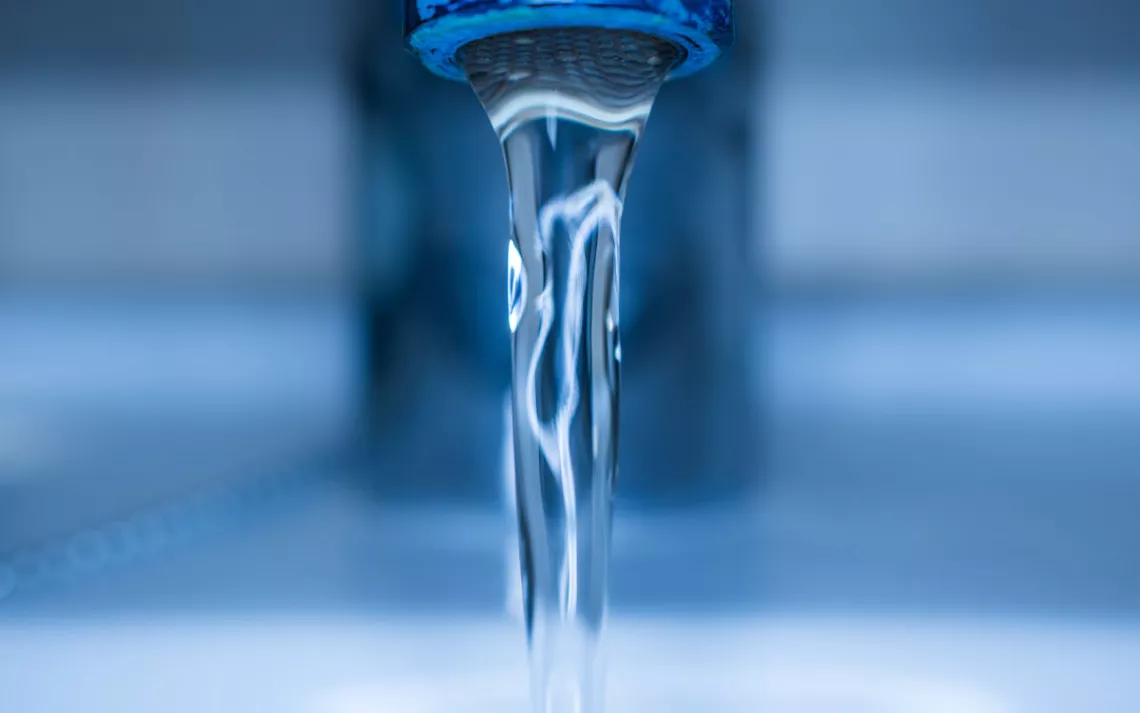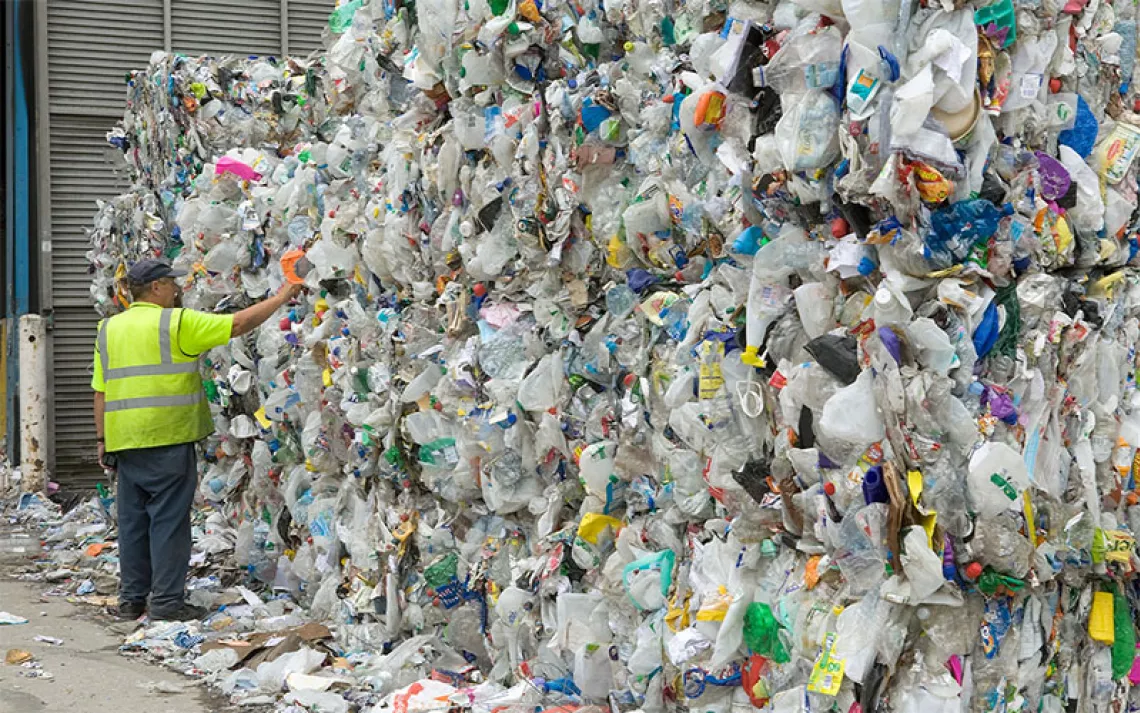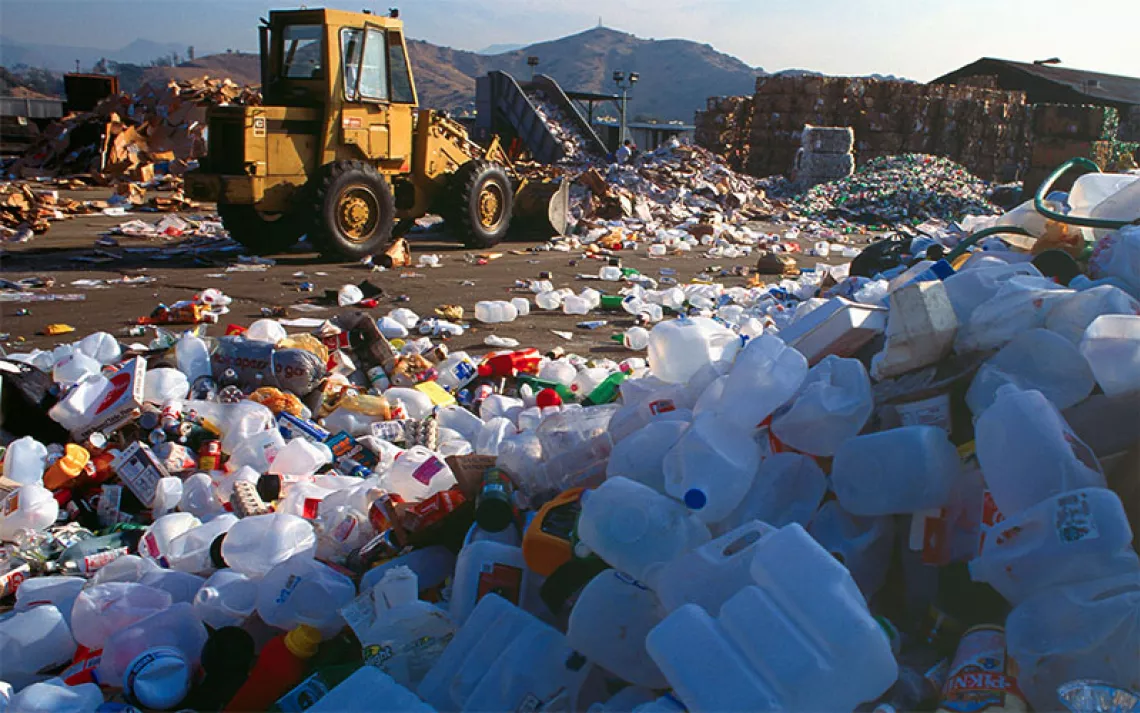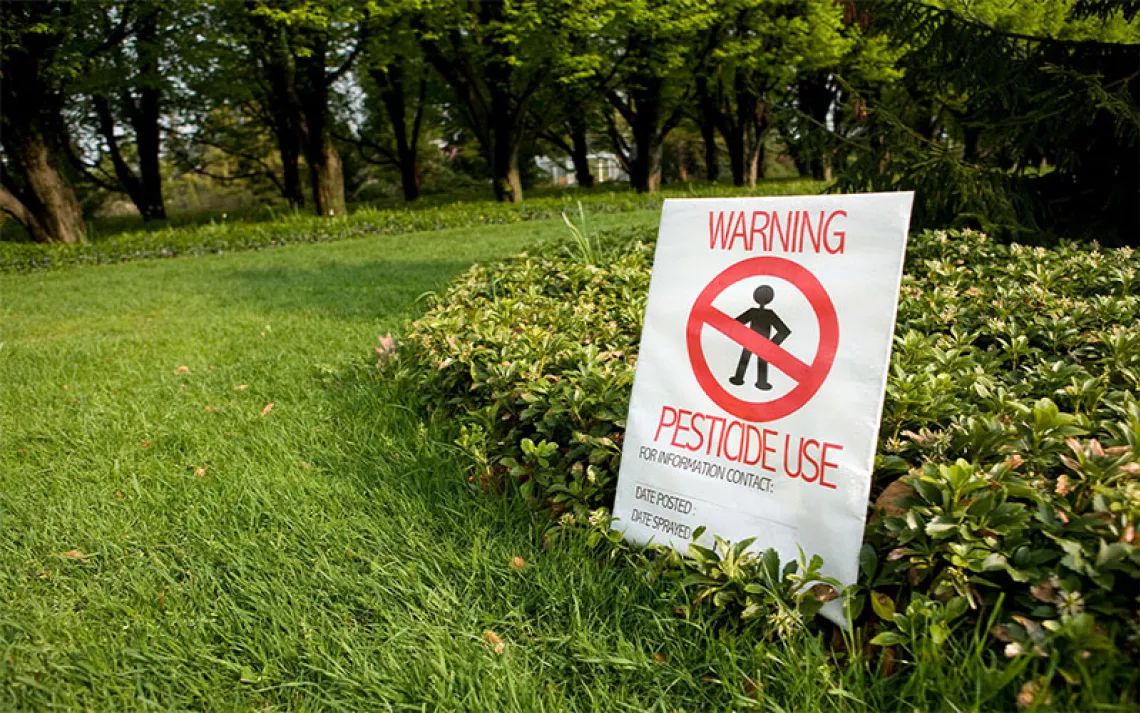ENVIRONMENT EXPLAINED
TFA, the PFAS "Forever Chemical" You Wish Wasn’t Everywhere
How to maintain or safely replace appliances and support policies for change

Photo by Eduardo R/Getty Images
Trifluoroacetic acid (TFA) could be one of the most widespread forever chemicals in our bodies, water, and air. In Europe, it’s considered one of the 15,000 per- and polyfluoroalkyl substances (PFAS), a.k.a. forever chemicals. However, the Environmental Protection Agency does not define TFA as a PFAS. Some scientists and environmental groups say that it should be defined as such. PFAS degrade into TFA when incinerated or treated in sewage plants. So when I say "PFAS," I include TFA.
Some PFAS, like TFA, are a subclass of potent fluorinated greenhouse gases that when emitted contribute to planetary warming. About 60 percent of all PFAS manufactured from 2019 to 2022 were greenhouse gases. These gases are found in refrigerants and foam-blowing agents in air conditioners, aerosol sprays, and heat pumps. Those sources make up most of the TFA entering our air. One of the biggest refrigerant sources of TFA is the new refrigerant HFO-1234yf. It’s most commonly used in car air conditioners. “All cars sold in the US today use either HFO-1234yf (which has a negligible impact on global warming) or HFC-134a (global warming potential over 1300),” Kristen Taddonio, a board member at Refrigerant Emissions Elimination Forum (REEF), told me. “Both refrigerants are considered PFAS in Europe but not in the USA. Both form TFA when they break down, but HFO-1234yf results in more TFA.”
PFAS pesticides are considered the main cause of water contamination with TFA, such as in rural areas in Europe. TFA might also get in our water because they’re in some pharmaceuticals. Unfortunately, the chemical cannot be removed from water using most brands of filters that have become the preferred choice for communities trying to get PFAS out of their drinking supply.
Like many chemicals in the PFAS category, exposure can lead to adverse health impacts. Studies have shown a link between PFAS and cancer as well as reproductive health problems in mammals. Continued use of PFAS refrigerants will increase the already-high levels of PFAS detected in human blood, the dust that we breathe, and water. “In a study of homes in Indiana, TFA was detected in 95 percent of the drinking water samples and was 84 percent of the total PFAS detected in drinking water,” Katie Pelch, a senior scientist at the Natural Resources Defense Council, told me. “TFA was among the most frequently detected PFAS in human blood, dust, and drinking water. And it was often found at higher concentrations than the other PFAS.”
The federal government has been largely absent when it comes to robust regulation of PFAS. The chemicals are not federally regulated for outdoor air protection, and most (including TFA) are not regulated to protect indoor air either.
But as a consumer, you can still make choices that will help you avoid products that contain these dangerous (and still largely unregulated) chemicals. Here’s how.
Safely fix leaks and recycle refrigerated appliances
Refrigerants, such as PFAS, can leak when common appliances such as refrigerators and freezers, air conditioners, heat pumps, dehumidifiers, water coolers, and ice makers break down. Ninety percent of refrigerant emissions happen at the end of an appliance's life. Refrigerant management, such as preventing leaks, is the fourth top climate solution, according to Project Drawdown. Fixing refrigerant leaks in appliances can prevent acute poisoning. Preventing those polluting leaks can also save you money in the long run and help appliances work better.
Here’s how to find a responsible technician to fix or replace refrigerated appliances. Contact contractors credentialed by organizations whose programs are recognized by the EPA. Then ask them to show their Clean Air Act (CAA) Section 608 certification for handling refrigerants. You can also request information about their process for collecting refrigerants to be reclaimed or recycled. Then compare their reply with CAA Section 608.
As soon as the technician is on site, ask them to search for any leaks, and if they find one, to repair it instead of “topping off.” “Remind them it’s illegal to vent refrigerants to your building or outside air. Unfortunately, it happens,” Taddonio told me. Venting a can of standard refrigerant creates the same climate impact as driving 116,000 miles. “If enough people report violations, that can help the EPA focus on repeat offenders,” Taddonio added.
Here are more ways to maintain air conditioners and heat pumps so you don’t have to replace them. Try the Department of Energy’s tips for air conditioners and heat pumps. For example, at least once a year, ask a DOE-certified Energy Skilled technician to check your heat pump. And whether or not you have a heat pump or air conditioner, try greener ways to stay cool.
If you need to get rid of refrigerated appliances, use EPA Responsible Appliance Disposal recyclers. They go beyond federal requirements to safely recycle refrigerants and other toxic chemicals. Others might not safely recycle.
Don’t buy just any Energy Star product
Some Energy Star refrigerated appliances might still have PFAS, such as TFA. To avoid them, use this filtered search I made for Energy Star fridges and freezers that are “lower impact on global warming,” “most efficient,” and available in the United States. Second, look for brands with PFAS-free refrigerant R-32 or R-600a, Taddonio told me. Third, save money with special programs.
For ACs, use this filtered search for Energy Star room air conditioners or central and mini-split air conditioners with R-32. “R-32 has a lower global warming potential than R-410A and is not a PFAS,” Taddonio explained.
You can also try these Energy Star heat pumps that use refrigerant R-32. I learned from Taddonio that R-32 is most efficient and is not a PFAS.
While perusing the Energy Star lists, you may come across terminology such as “lower impact on global warming.” Keep in mind that low global warming potential refrigerants can still cause long-lasting PFAS (and TFA) pollution, Richie Kaur, a senior super pollutant reduction advocate at NRDC, told me.
What we really need is systems change
Ask your elected officials to regulate PFAS as a class and quickly phase out unnecessary uses of the chemicals. Check the bill tracker published by Safer States for information on bills that have been introduced in your area (and if they don’t appear in your state on the map, ask your official to endorse one!). You can also join REEF, a nonprofit eliminating refrigerant emissions by collaborating with end users, manufacturers, and policymakers.
 The Magazine of The Sierra Club
The Magazine of The Sierra Club



